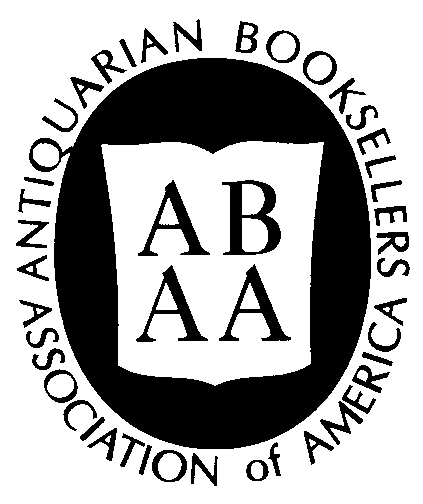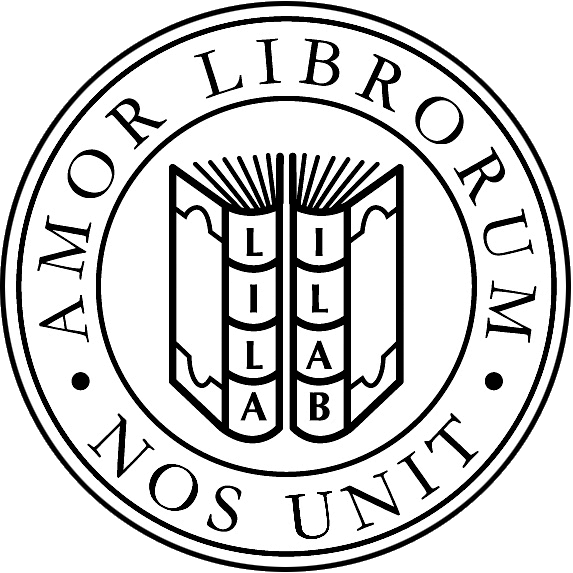Dealer in Rare and First-Edition Books: Western Americana; Mystery, Detective, and Espionage Fiction
Seattle
CHARLES H KITTINGER
Other works by CHARLES H KITTINGERPublication: Chas H Kittinger, nd (ca 1890), Seattle, ca 1890
First edition. 6" x 9" in red pictorial linen-covered boards with title in gilt. [50] pp. with 24 color lithograph plates, red woodcut borders throughout, text in blue ink, printed land and real estate advertisements for Chas. H. Kittinger on front & back paste down sheets. A very scarce land promotion view book for Seattle, Washington Territory, published by Charles H. Kittinger, to promote his real estate firm which was selling lots for the newly organized Tracyton on Puget Sound. Overview of Seattle followed b information on the Seattle Harbor, the dry dock and marine railway; the Navy Yard; Seattle's commerce; coal, steel and iron; shipping from and to Seattle; the logging industry; Seattle as a railway center; Seattle's business blocks; Seattle's industries, real estate, hotels, banks, fisheries, lumber trade, churches, schools and hospitals; Frye's Opera House; Mount Rainier; the climate of Puget Sound; the hop industry, etc. This beautifully printed view book features images of the Kirkland steamer on Lake Washington; the Olympic Range; Seattle Dry Dock and Marine Railway; Providence Hospital; Schwabacher Building; Kittinger Block on South Second Street; the Rainier Club on Third Street; the Scurry Flat; a logging scene on Seattle, Lake Shore & Eastern Railroad; bustling downtown at Front, Commercial, James & Yesler Ave; an interior view of workers in a salmon cannery in Seattle; the Hop fields and hop pickers near Snoqualmie, the YMCA building; Gilmore's Block; Hotel Denny; Frye's Opera House on Marion Street; Mt. Rainier; etc. Of special interest are the many examples of Seattle buildings noted as having been designed by Scottish-American architect Emil H. Fisher (1844-1905), including the Kittinger Block, the Scurry Flat Apartment block, the Korn Block, the Y.M.C.A. Building, Gilmore's Block, the Pioneer Block, and many others. Following the great fire of 1889 which had destroyed all of downtown Seattle, Fisher had emerged as the leading architect and his building designs reshaped the city. Until 1891, he was the leading Seattle architect besieged with commissions, until he gave up his practice to run the Abbott Hotel, only to lose everything in the crash of 1893. Charles Kittinger (1863-1901) had established himself as a real estate agent and land promoter working with his brother George B. Kittinger, a mining engineer, as early as 1885. He worked to promote his land deal of Tracyton (named after Benjamin F. Tracy, Secretary of the Navy) to take advantage of the proposed naval base built at Bremerton, by selling lots to investors. During the 1893 crash, he ran into a number of legal troubles by reneging on a number of real estate deals in and around Kirkland by failing to transfer title to purchasers. He would eventually move to Philadelphia, and then Delaware where he organized the Yukon-Cariboo-British Columbia Gold Mining Development in 1896 intending to take advantage of the Yukon Gold Rush. See: Jennifer Ott, Voters Approve Formation of Port of Tracyton on June 1, 1929, Historylink (2010); The Pioneer Square-Skid Road National Historic District, Narrative Statement of Significance, p. 63; Ochsner, Shaping Seattle Architecture: A Historical Guide to the Architects (2014), pp. 52-57. Mottling to top inch of boards along with light wear to extremities. Very good.
Inventory Number: 43252





![Reliable Incubator And Brooder Co. 11th Annual Catalogue / [Title Page] Eleventh Annual Guide And Combines Catalogues. Reliable Incubator And Brooder Co. Leading Poultry Supply House Of The United States Reliable Incubator And Brooder Co., Quincy, Illinois](/media/images/thumb/43576.jpg)








